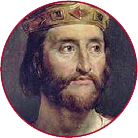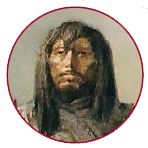
c. 1450 bc, Egypt vs. Syria
After conquering Syria, Thutmose III kept the sons of defeated kings as hostages to ensure that the fallen city-states remained loyal to the pharaoh. The boys were educated in Egyptian culture and, once ready to succeed their fathers, returned to their homelands, where they were expected to rule as loyal tributaries to the Egyptian kingdom.

842, Charles the Bald vs. Lothar I
On his way to a conference in Metz to negotiate the division of his grandfather Charlemagne’s lands, Charles discovered that his half-brother Lothar’s men were encamped much closer to the meeting place than his own. Not wanting to negotiate in such proximity to Lothar’s army, Charles demanded that he offer some of his men as collateral for the duration of the conference.

1678, France vs. the Dutch Republic
Establishing the custom of trading prisoners of war as part of peace negotiations, Louis XIV of France and Dutch stadtholder William of Orange signed a treaty to end the Franco-Dutch War. The treaty ordered the return of all prisoners of war with no conditions or restrictions, a unique stipulation at the time.

1962, U.S. vs. USSR
Hoping to reduce nuclear tension, John F. Kennedy and Nikita Khrushchev exchanged Cold War prisoners. Francis Gary Powers, a U‑2 pilot whose plane was shot down in Soviet airspace during a reconnaissance mission, was traded for KGB officer Rudolf Abel, who had been captured in New York in 1957. The swap took place on the Glienicke Bridge connecting East Germany and West Berlin.

75 bc, Julius Caesar vs. Cilician pirates
A young Caesar ridiculed the pirates who captured him in the Aegean Sea off the island of Pharmacusa for not asking for a higher ransom. While waiting for his messengers to return with the money, he took command of the pirates’ routines, directing daily exercises and practicing his speeches on them.

53 bc, Han vs. Xiongnu
Ousted from power by his older brother, Xiongnu leader Huhanye forged a relationship with Han China by offering his son Zhulouqutang to the Han court as a guarantee. Over the next two years, Huhanye received 16,000 soldiers, 8,000 units of silk, 77 suits of clothing, and 20 pounds of gold from the Han dynasty.

1580, Order of the Holy Trinity vs. Barbary pirates
While fighting in military campaigns against the Turks in the Mediterranean, Miguel de Cervantes was captured by pirates and held as a slave in Algiers for five years. For ransom money his mother turned to Philip II and the Order of the Holy Trinity, which kept a budget for retrieving Christian hostages. Cervantes later documented the experience in his play Life in Algiers and his novel La Galatea.

2002, Colombia vs. FARC
Anti-corruption politician Ingrid Betancourt was kidnapped and held in the jungle for six and a half years by the Revolutionary Armed Forces of Colombia. Her captors forbade her from initiating any communication. “Everything has to be asked for,” she later said. “Everything is a negotiation.” She was ultimately rescued by unarmed secret service agents pretending to be FARC commanders.